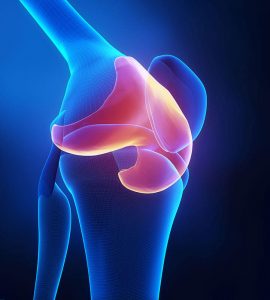Normally, our fingers glide effortlessly as we grip and manipulate objects, allowing us to perform tasks like buttoning a shirt or holding a hammer. However, with trigger finger, the affected digit catches or locks when bent. This is often accompanied by a painful snapping sensation. This disruption to the finger’s mechanics severely limits our ability to perform even basic daily activities. Simple tasks like grasping a pen, holding a cup, or even opening a door can become challenging and painful.
What Is Trigger Finger?
Trigger finger, or stenosing tenosynovitis, is a condition that restricts finger and thumb movement, often causing the affected digit to become stuck in a bent position. This can lead to a sudden, snapping release as the finger straightens.
While any finger can be affected, the ring finger and thumb are most commonly involved. Individuals with trigger finger may find their affected digits locked in a flexed position towards the palm, making straightening difficult or impossible.
What Are the Symptoms of Trigger Finger?
Trigger finger can affect any finger or thumb and sometimes multiple digits in both hands. It can present a range of symptoms that typically worsen over time. Common symptoms include:
- Stiffness or pain when flexing the fingers or thumb, particularly in the morning
- A popping or clicking sensation during movement
- Tenderness or a palpable bump in the palm at the base of the affected finger
- Finger catching or locking in a bent position, often released with a sudden, painful snap
In severe cases, the finger may become completely locked in a flexed position, requiring manual assistance to straighten.
What Causes Trigger Finger?
Trigger finger occurs due to the inflammation within the tendon sheath, a protective tunnel surrounding the tendons that connect muscles to bones in our fingers and thumbs. Normally, these tendons glide smoothly within their sheaths, facilitating finger flexion and extension. However, irritation and swelling of the sheath can obstruct this movement.
Prolonged irritation of the tendon sheath can cause it to thicken and scar, hindering the tendon’s ability to move smoothly. This narrowing of the sheath forces the inflamed tendon to pull through a restricted space when you bend your finger or thumb, causing a snapping or popping sensation.
What Are the Risk Factors for Trigger Finger?
While the exact cause of trigger finger is not fully understood, several factors increase the risk of developing this condition. These risk factors include:
- Forceful Hand Activities: Repetitive hand motions and sustained gripping, common in activities like playing musical instruments or performing manual labour, can place excessive stress on the tendon sheaths. This repeated stress can trigger inflammation, a key factor in the development of trigger finger.
- Contact Friction: Prolonged exposure to vibrating tools or sustained gripping of vibrating objects, such as bicycle handlebars or power tools, can induce repetitive trauma to the tendon sheaths. This repetitive trauma, or contact friction, can lead to inflammation and thickening of the sheaths, ultimately increasing the risk of developing trigger finger.
- Demographic Factors: Trigger finger is more common in women and individuals in their 40s to 60s.
- Pre-existing Health Conditions: Individuals with diabetes, rheumatoid arthritis, gout, and thyroid conditions are at a higher risk.
How Is Trigger Finger Diagnosed?
Trigger finger is generally diagnosed with a physical examination. During the appointment, the doctor will carefully assess the patient’s hand and fingers to check for any tenderness. They may also ask the patient to gently straighten their fingers or thumb to evaluate the extent of tendon and stiffness and detect any clicking or locking.
How Is Trigger Finger Treated?
Trigger finger treatment options can range from conservative treatments to surgery, depending on its severity and duration.
Non-surgical Treatment
- Rest: Avoiding activities that aggravate the symptoms is crucial, allowing the inflamed tendon sheath to heal.
- Medicines: Nonsteroidal anti-inflammatory drugs (NSAIDs), such as ibuprofen and naproxen sodium, can help reduce pain and inflammation.
- Splinting: Wearing a splint, especially at night, can keep the affected finger in an extended position, preventing it from curling and allowing the tendon to rest.
- Stretching Exercises: Specific exercises can improve tendon mobility and flexibility, reducing stiffness and improving range of motion.
- Steroid Injections: Injecting corticosteroids into the tendon sheath can significantly reduce inflammation and provide temporary relief. In some cases, patients may need more than one injection.
Trigger Finger Surgery
If nonsurgical treatments fail to provide relief, surgery may be necessary. The most common procedure is a trigger finger release, which involves making a small incision in the palm to release the constricted portion of the tendon sheath, allowing the tendon to glide freely.
Trigger finger release surgery is typically performed outpatient using local anaesthesia. Following the operation, immediate finger movement is generally encouraged to promote healing and prevent stiffness. While the incision can heal within a few weeks, complete recovery can take up to four to six months.
What Are the Potential Complications of Trigger Finger Surgery?
Trigger finger release surgery is typically a safe and effective procedure, but like any surgical intervention, potential complications can arise. These include:
- Temporary Post-Operative Discomfort: Soreness and swelling at the incision site are common and usually resolve with time.
- Residual Stiffness: Some stiffness in the affected finger may persist, particularly in individuals who experienced significant pre-operative stiffness.
- Limited Extension: In rare cases, achieving full finger extension may be challenging, especially if the finger was significantly contracted before surgery.
- Infection: Although uncommon, infection at the surgical site is a potential risk.
- Persistent Symptoms: Locking or clicking may persist, though this is infrequent.
- Tendon Displacement (Bowstringing): In very rare instances, the tendon may shift from its intended position, known as bowstringing.
How Can You Prevent Trigger Finger?
Preventing trigger finger primarily involves minimising strain on your hands, fingers, and thumbs. Here are some tips to prevent trigger finger:
- Regular Breaks: If your work or hobbies involve repetitive hand movements, take frequent breaks to allow your tendons to rest and recover.
- Optimise Technique and Posture: To reduce unnecessary stress on your hands, ensure you use proper form and posture during sports or work-related activities.
- Gradual Activity Progression: When starting new exercises or activities, gradually increase the intensity and duration to allow your tendons to adapt and minimise the risk of injury.
FAQs About Trigger Finger
How long does the trigger finger usually last?
The duration of trigger finger symptoms and recovery varies depending on the affected digits and symptom severity. With non-surgical treatments, trigger finger can last within a few weeks to a few months.
Can trigger finger heal on its own?
While some mild cases improve with rest, it is always best to seek medical advice for trigger finger. Professional treatment can significantly improve outcomes and manage potential underlying conditions that may cause trigger finger symptoms.
Is trigger finger a form of arthritis?
No, trigger finger is not a form of arthritis. Trigger finger involves inflammation of the tendon sheath, hindering tendon movement, while arthritis affects the joints themselves. However, people with inflammatory arthritis, like rheumatoid arthritis, have a higher risk of developing trigger finger.
In Summary
Trigger finger can significantly disrupt daily life and interfere with work. The painful snapping or locking of the affected finger can limit dexterity and cause frustration, making everyday activities challenging.If you are experiencing symptoms like finger stiffness, snapping sensations, or locking, do not hesitate to seek medical attention. Early diagnosis and treatment can prevent the condition from worsening, alleviate pain, and restore normal hand function. Contact us today at 8028 4572 to schedule a consultation with our orthopaedic surgeon.

MMed (Orth), FRCS Orth & Tr (Edin)
Dr James Tan is a trusted orthopaedic surgeon in Singapore with over 10 years of experience in sports surgery and exercise medicine. He has treated athletes from Singapore’s national teams and professional football leagues. A specialist in knee, shoulder, and elbow injuries, Dr Tan is also skilled in minimally invasive tendon and ligament repair, cartilage and meniscus surgery, and joint replacement. He is a founding member of the Singapore Shoulder and Elbow Surgery Society and a fellow of the Royal College of Surgeons (Edinburgh). Committed to research and education, Dr Tan leads various research projects and serves as Adjunct Assistant Professor at both NUS and NTU medical schools.




